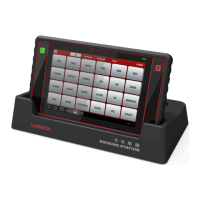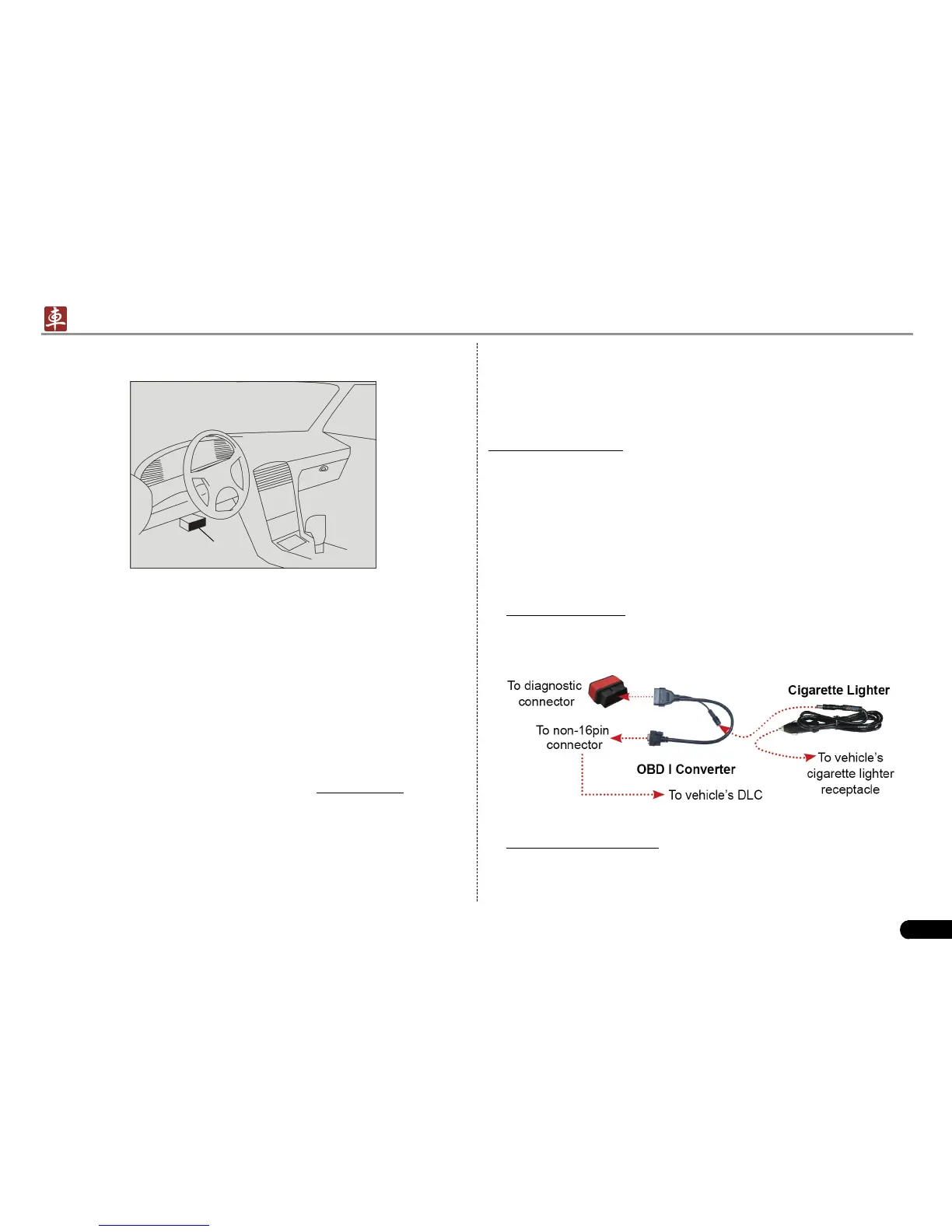LAUNCH
X-431 PADII
User's Manual
13
location.
Near the center
of dashboard
Fig. 5-1
5.1.3 Vehicle Connection
The method used to connect the diagnostic connector to a vehicle’s
DLC depends on the vehicle’s conguration as follows:
A vehicle equipped with an OBD II management system supplies •
both communication and 12V power through a standardized DLC.
A vehicle not equipped with an OBD II management system •
supplies communication through a DLC connection, and in some
cases supplies 12V power through the cigarette lighter receptacle
or a connection to the vehicle battery.
Follow the steps mentioned below to connect OBD II vehicle:
Locate vehicle’s DLC socket. 1.
Plug the diagnostic connector into the vehicle’s DLC socket (It 2.
is suggested to use the OBD II extension cable to connect the
diagnostic connector and DLC socket.).
Choose one of the two ways to obtain power from:3.
A. Power adaptor: Connect one end of the included power adaptor
to DC IN port of X-431 PADII tablet, and the other end to AC
outlet.
B. Internal battery pack: For details on how to recharge X-431
PADII, see “Chapter 3.1 Charging X-431 PADII”.
For non-OBDII vehicle, proceed as follows:
Locate vehicle’s DLC socket. 1.
Select the corresponding non-16pin connector.2.
Plug the non-16pin end of the connector into the DLC socket, then 3.
connect the other end to the OBD I converter, and then tighten the
captive screws.
Connect the other end of the converter to the included diagnostic 4.
connector.
To supply power to OBD I converter from:5.
A. Cigarette Lighter: Connect one end of the cigarette lighter cable
to vehicle’s cigarette lighter receptacle, and the other end to the
power jack of OBD I converter.
Fig. 5-2
B. Battery Clamps Cable: Connect one end of the battery clamps
cable to vehicle’s battery, and the other end to the power jack of
OBD I converter.

